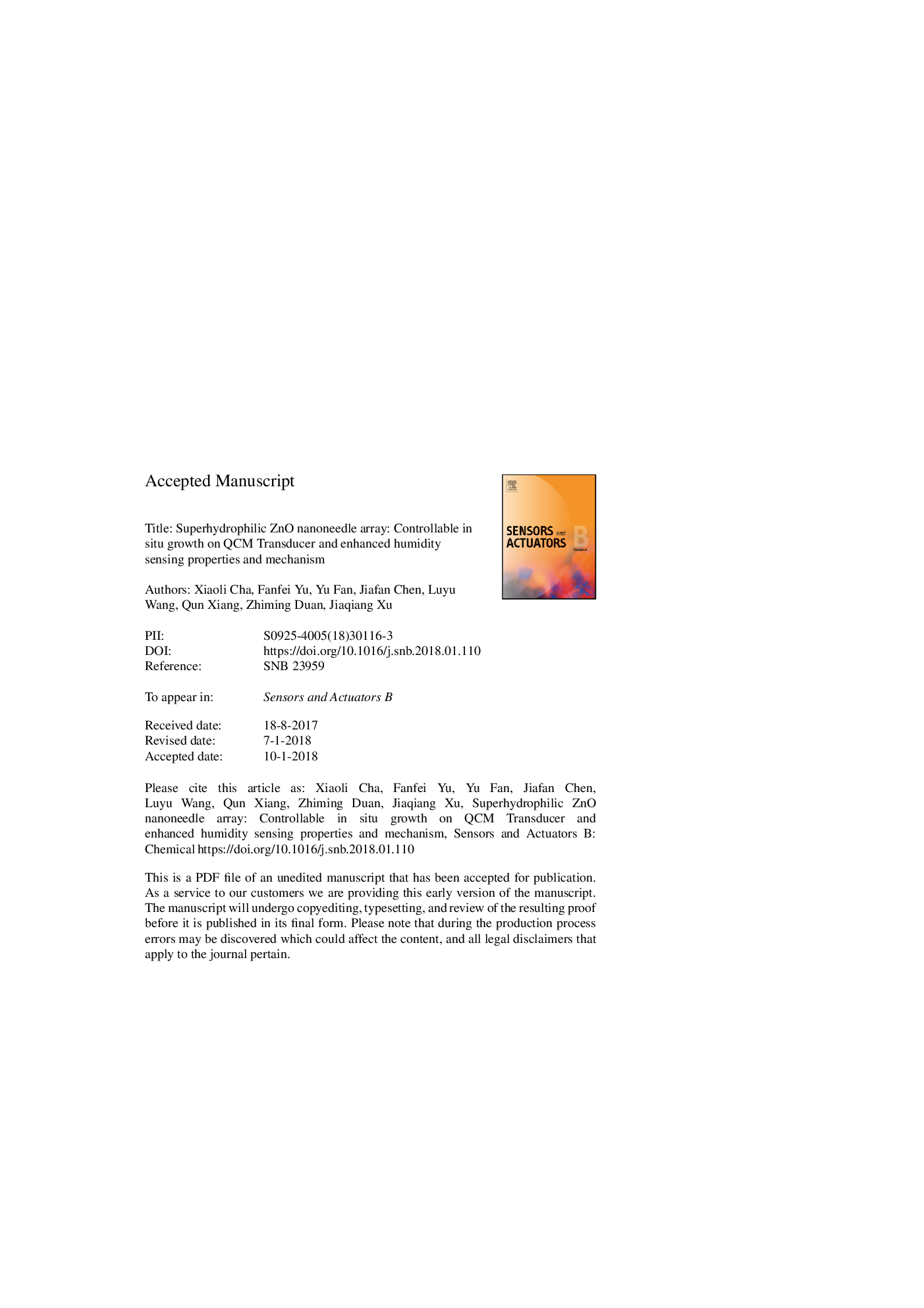| Article ID | Journal | Published Year | Pages | File Type |
|---|---|---|---|---|
| 7140449 | Sensors and Actuators B: Chemical | 2018 | 29 Pages |
Abstract
Humidity sensors have attracted intensive interest due to their significant air humidity monitoring values. But it is still a challenge in achieving highly sensitive and accurate humidity sensors with a rapid and convenient method. And only few studies examined the relationship between the sensing and the wetting behavior of sensing materials. Here, we propose a novel strategy for designing humidity sensor by using superhydrophilic ZnO nanoneedle array. Via this smart design, superhydrophilic ZnO nanoneedle array was first in-situ grown on the electrode of quartz crystal microbalance (QCM) transducers by a facile chemical deposition method in solution. The design admits the water molecule easily reach the internal and outer surface of the array, further form multi-molecular-layer adsorption mode on the surface based on a physical adsorption effect between water molecule and superhydrophilic ZnO nanoneedle array. The characterization and sensing results show that the sensors constructed from superhydrophilic ZnO nanoneedles with a defined morphology exhibit enhanced humidity sensing properties including high sensitivity (21.4â¯Hz/%RH, at 95%RH), fast response/recovery speed (2â¯s/2â¯s, at 33%RH), well reproducibility, and narrow hysteresis (Maximum 2%RH) compared with the hydrophilic ZnO seeds and the superhydrophobic ZnO nanoneedles. Finally, the humidity sensing mechanism was also discussed in detail.
Related Topics
Physical Sciences and Engineering
Chemistry
Analytical Chemistry
Authors
Xiaoli Cha, Fanfei Yu, Yu Fan, Jiafan Chen, Luyu Wang, Qun Xiang, Zhiming Duan, Jiaqiang Xu,
